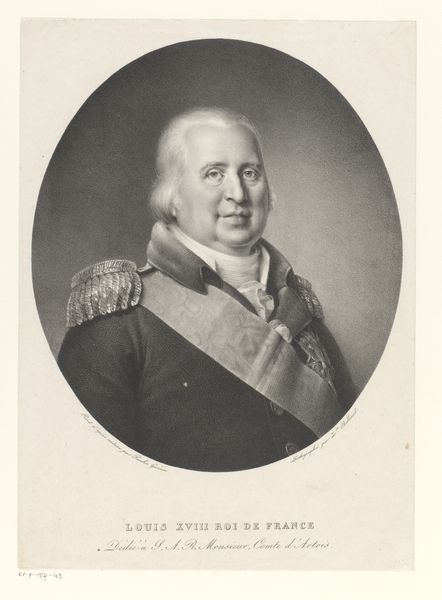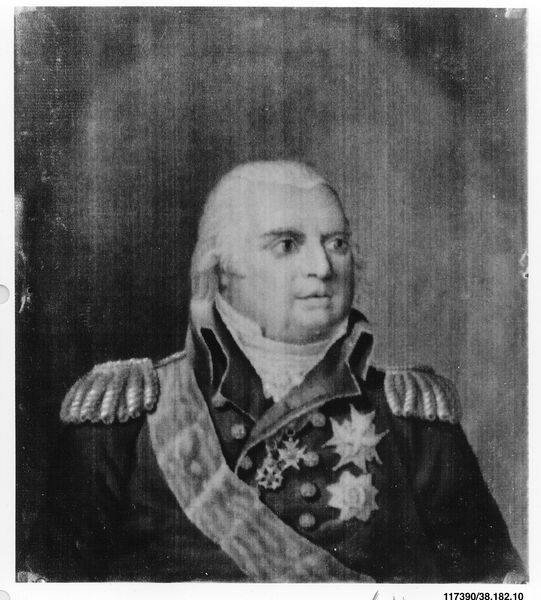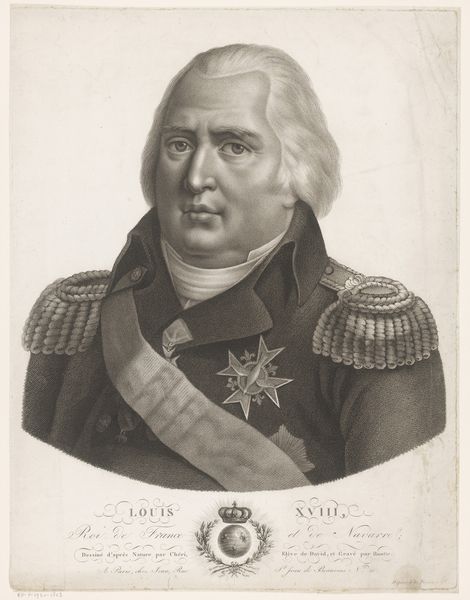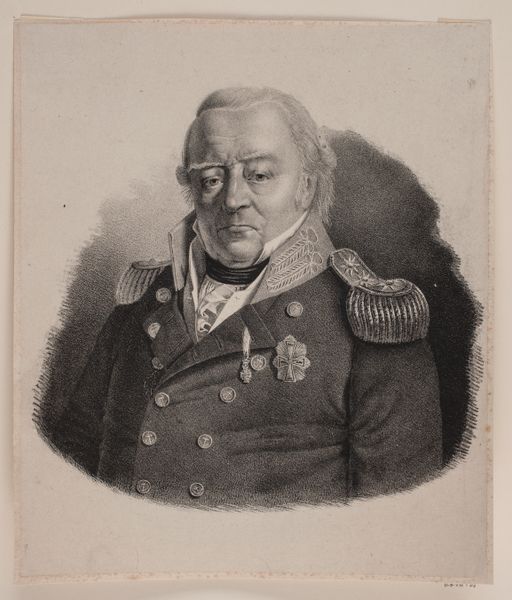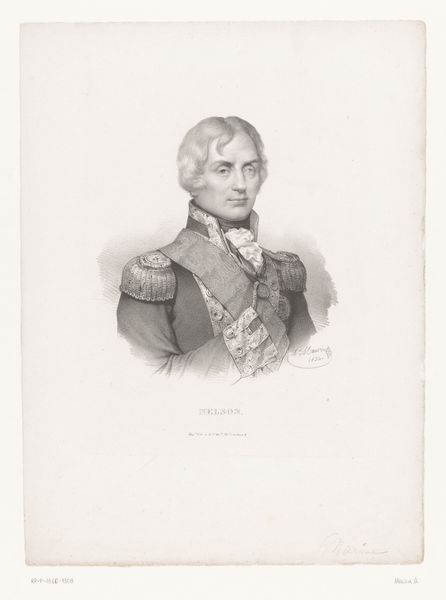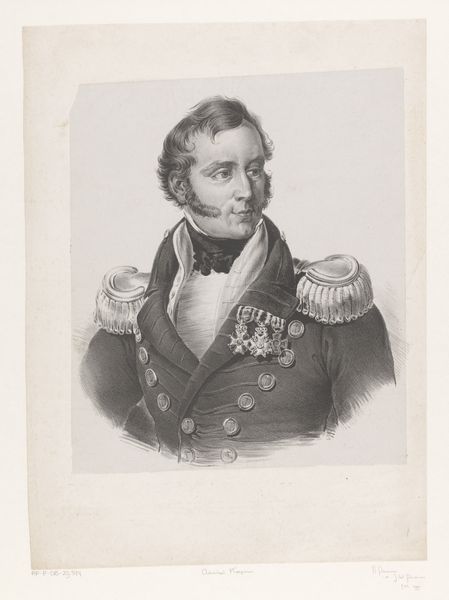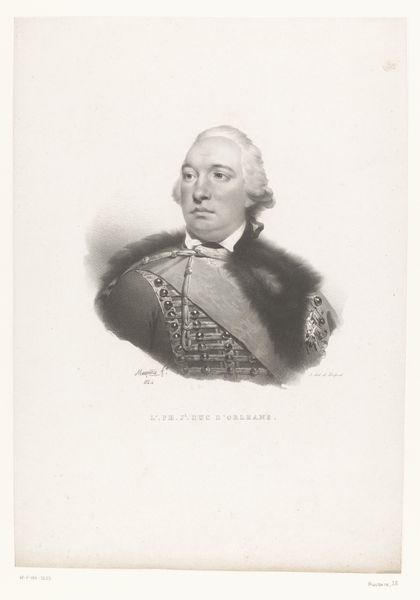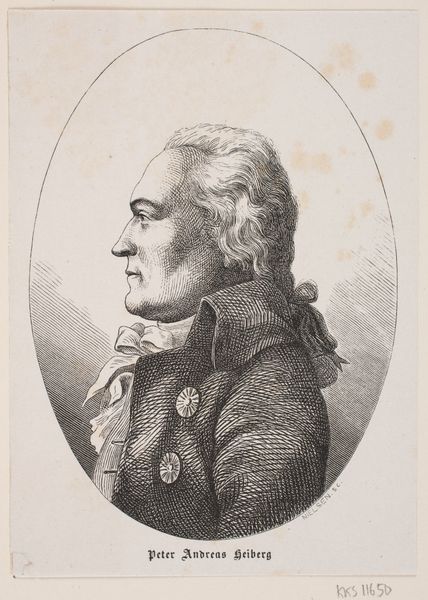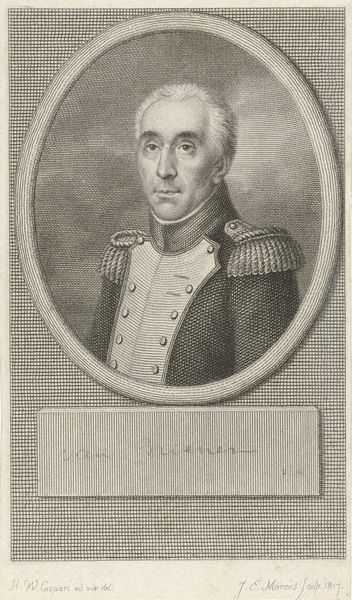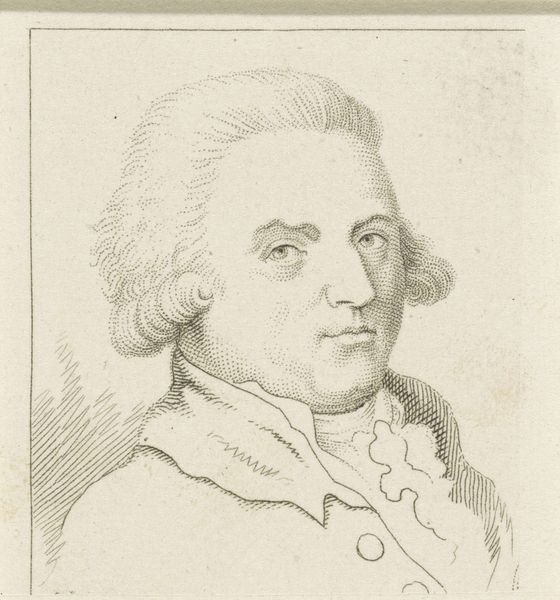
drawing, lithograph, print, paper
#
portrait
#
drawing
#
neoclacissism
#
lithograph
# print
#
paper
Dimensions: 283 × 245 mm (image); 339 × 258 mm (sheet)
Copyright: Public Domain
Curator: Just look at that. A certain weight hangs in the air, doesn’t it? A lithograph rendering of Louis XVIII from 1816, created by Pierre Nolasque Bergeret. Editor: Indeed. Immediately, I’m struck by the layering—the uniform practically overwhelms him, visually weighing him down. Those heavy epaulettes! What's the purpose behind all those elaborate decorations? Curator: Symbols of power, unquestionably. He’s covered in emblems of legitimacy, desperate to appear regal. It reveals the anxieties of the restored monarchy, a projection meant to instill faith, perhaps even fear, in the population after years of revolution. Editor: Precisely. But does it work? To my eye, all the ornamentation feels like a rather desperate attempt to manufacture authority. Consider the historical context: a king returned to power not by popular demand but through foreign intervention, a constant reminder of his dependency. Curator: Yes, the symbols act as almost talismans warding off threats to his rule. And the artist accentuates the face—notice the deliberate shadowing that conveys seriousness, and a calculated expression of authority. This isn't about warmth or human connection; it's about image. The symbols have been meticulously placed as part of his official iconography. Editor: Which, to me, reads as overcompensation. Perhaps a touch of vanity as well. Those powdered curls seem almost comically outdated, don’t you think? There's an interesting tension, a visual push-and-pull between the desire for timeless authority and the awkward realities of the post-Napoleonic era. The choice of lithography for dissemination signals the regime's effort to reach the wider public with this image. Curator: Interesting you pick up on his vanity. In symbolic terms, even such minute choices act as coded communication. Each aspect of dress and the calculated, stern countenance presents a highly tailored image. It echoes past regimes even as France moves hesitantly forward. He represents the old order reborn in a new age of skepticism and nascent republicanism. Editor: So the artist is creating a cultural artifact which actively seeks to restore the visual codes of power? Curator: Precisely. It reflects a very calculated awareness of how symbolic messaging functions to shore up a regime still feeling vulnerable. Editor: Well, examining Bergeret’s "Portrait of Louis XVIII," really allows us to see art as more than aesthetics; here it embodies the tense and changing social-political atmosphere. Curator: Yes, through art we understand not only images, but the intricate webs of cultural continuity and shifts in power dynamics.
Comments
No comments
Be the first to comment and join the conversation on the ultimate creative platform.
